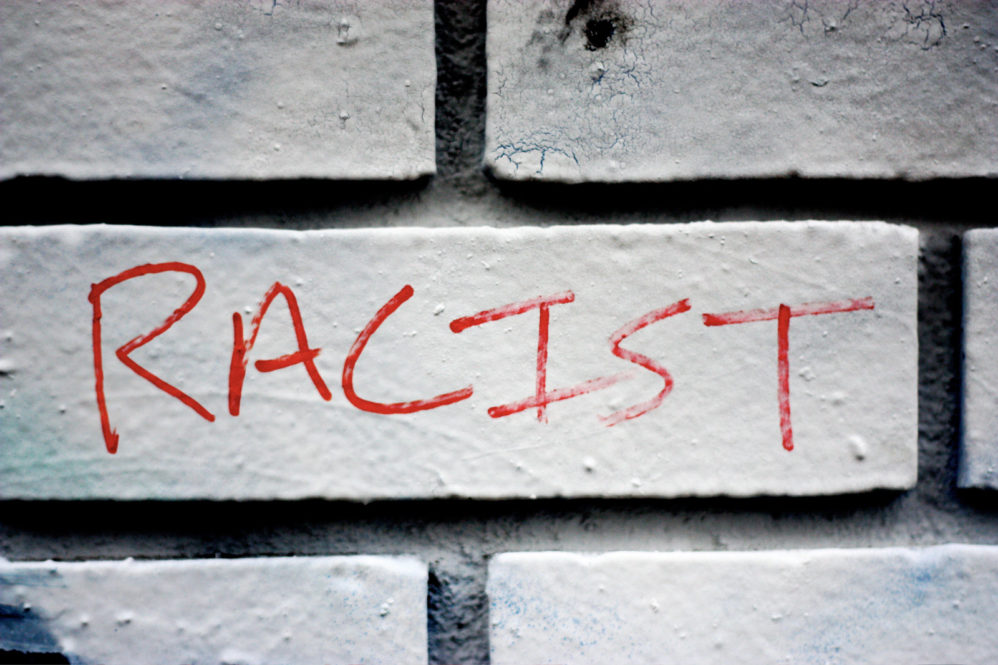
One high school in Oregon postponed a vote last week on whether to change its mascot from the Trojan to the Evergreens over concerns the imagery of lush timber was racist.
Ida B. Wells-Barnett High School, named after the prominent black activist and journalist who documented lynching in the post-Civil War era, was considering a mascot change to adopt a symbol more representative of its connection to the community. Board members complained, however, that evergreen trees would conjure up imagery invoking the brutal execution of African-Americans.
“I think everyone comes with blind spots and I think that might’ve been a really big blind spot,” said Director Michelle DePass at the school board meeting.
The episode is emblematic of how the country has come to see race, viewing minorities deemed oppressed by the woke left as fragile special-interest groups that Americans must hold a religious commitment to buttress in the moral righteousness of “antiracism.” Everywhere, Americans are explicitly reminded of the racial inequities among minority groups as evidence of their inherent racism and the nation’s irredeemably racist past — and present.
Starting at an early age, Americans are barraged with statistics and anecdotes, about everything from income to health status, that are always broken down by race to highlight disparities that victimize minorities and define their destiny as one determined by racist circumstance over personal responsibility. This ideology of abject victimhood taught in classrooms, newsrooms, and boardrooms after being bred for an entire generation on left-wing university campuses has now produced a nation dangerously constrained by a toxic obsession with race.
Under this doctrine, anything and everything must be vetted by 21st-century standards of cultural acceptance to root out the poisonous racism. This obsession, however, is the root of American demise. A nation primed to think only about race will only think about race.
Americans are now trained to see racism in everything, even where it doesn’t exist. Trees are racist. Hiking is racist. Your cereal box is racist. Your depictions of Santa Claus and Jesus are racist. Claiming otherwise to any of it is also racist.
Minorities are trained to see themselves as hopelessly oppressed and facing endless aggressions at every turn. Every slightest impolite infraction can earn the morally indignant condemnation as racist, wrecking the perpetrator as a villain responsible for deep personal trauma. The so-called trauma, however, is merely a preconception inculcated by years of woke indoctrination.
None of this is to say racism doesn’t exist. Americans can and should recognize there are racial tensions that need to be addressed. The radical obsession with defining every aspect of the modern culture through the exhaustive lens of “antiracism,” however, has only led tensions to new heights while deceiving millions of well-meaning Americans who are terrified of the racist label and roping them into the effort. And “antiracism,” weaponized by the political left to pursue political ends through intimidation of their opponents, has stifled debate, driven division, and merely created a different kind of racism.
The debate over voter ID requirements included in the recent Republican-passed Georgia voting bill provides a perfect illustration of today’s racism infecting woke corporatists and the Democratic Party, which claim — in the name of antiracism of course — that mandated identification requirements for ballot access are too difficult for minorities to comply with.
And then there’s affirmative action and the push for reparations, endorsed by the Democratic Party, which claims minorities aren’t capable of achieving of the American dream without white saviors and billions in special assistance.
Race relations under the mandated lens of antiracism aren’t getting any better. On that, nearly all Americans agree. According to Gallup, in 2008, the year Americans elected their first black president, 70 percent of white adults and 61 percent of black adults said race relations were either “very” or “somewhat good.” Only 46 percent of white adults and 36 percent of black adults said the same in 2020.
If last year’s radical acceleration of antiracism in the culture war has taught us nothing else, it’s that the colorblind approach was likely the right one. The opposite has shown to be an aggressive form of racism featuring the bigotry of low expectations cloaked in the moral righteousness of social justice.